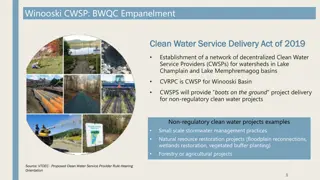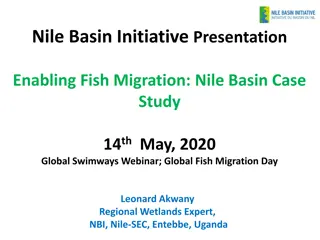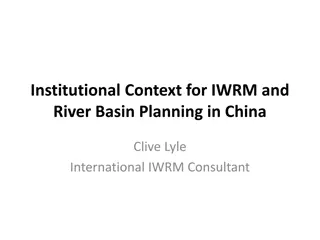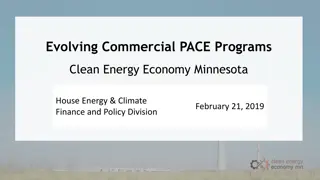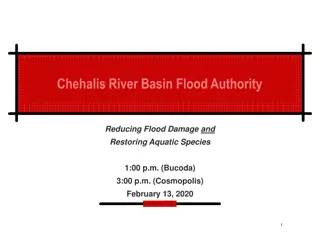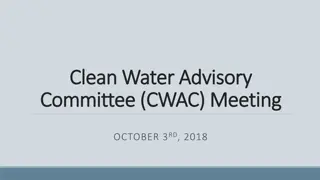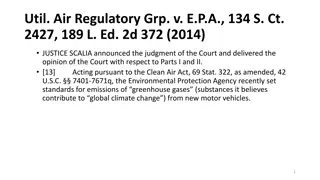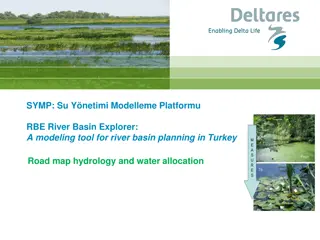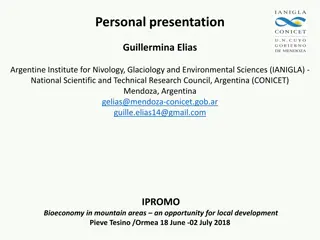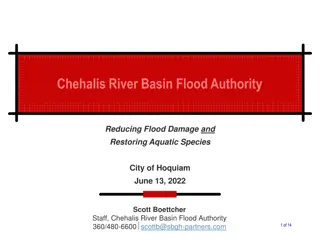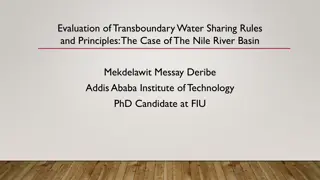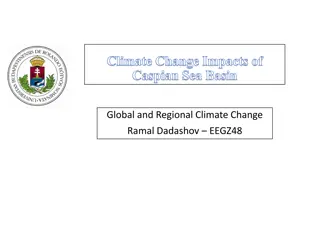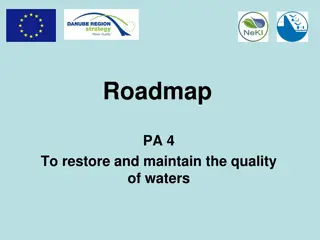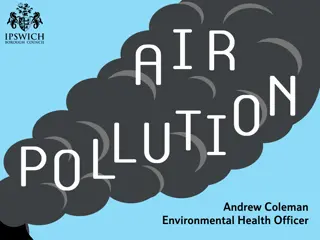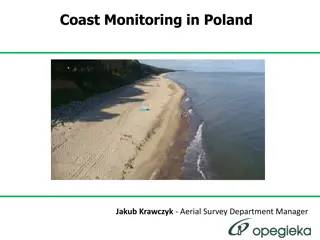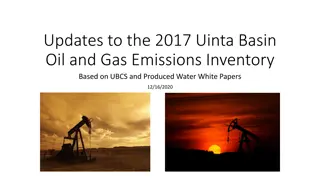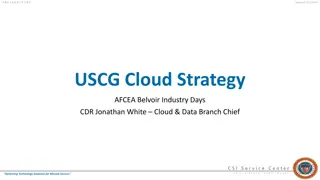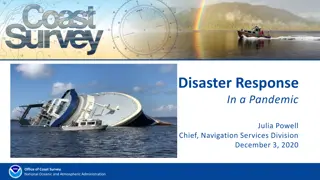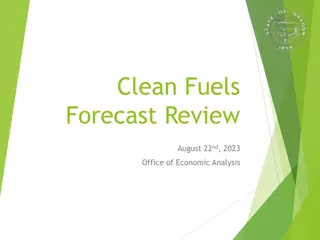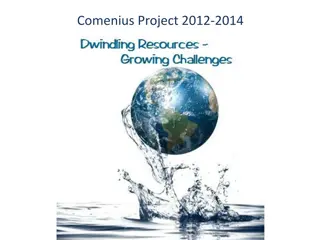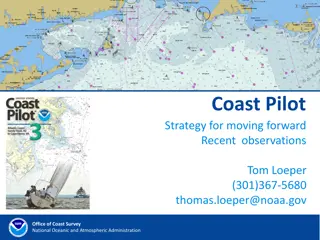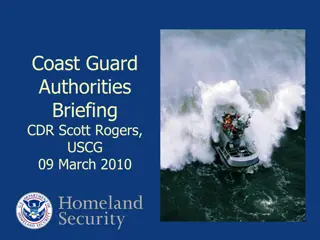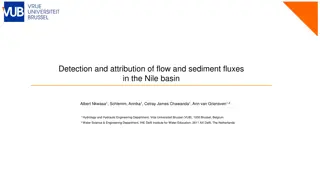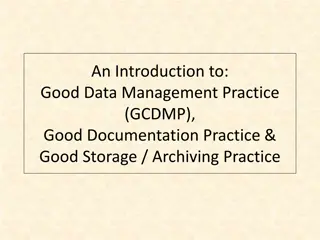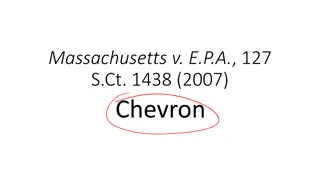The Path to Clean Air: Importance of Good Data in South Coast Air Basin
Good data is essential in addressing air quality issues in the South Coast Air Basin. With a population of 17 million and significant sources of pollution, implementing regulations is crucial to reduce health risks and improve overall air quality, impacting public health and the environment positively.
Download Presentation

Please find below an Image/Link to download the presentation.
The content on the website is provided AS IS for your information and personal use only. It may not be sold, licensed, or shared on other websites without obtaining consent from the author. Download presentation by click this link. If you encounter any issues during the download, it is possible that the publisher has removed the file from their server.
E N D
Presentation Transcript
The Path to Clean Air Requires Good Data Matt Miyasato, Ph.D. Deputy Executive Officer Science & Technology Advancement
South Coast Air Basin 44% Population 2
South Coast Air Basin 40%US Freight 44% Population Import 3
South Coast Basin 17million residents 6thlargest cargo gateway +10 million passenger cars +1.5 million heavy-duty trucks 4
Cancer Risk Cancer Risk 6 6
+5,000 deaths year Additional costs include Hospitalizations Cases respiratory illness School absences Lost workdays 7 7
Top NOx Sources in the Region 350 Heavy-Duty Diesel Trucks 300 Off-Road Equipment Maine Vessels 250 RECLAIM (Large Stationary) Light-Duty Cars & SUVs 200 Tons/Day Locomotives Aircraft 150 Manufacturing and Industrial 2023 100 Heavy-Duty Gasoline Trucks 2032 Medium-Duty Trucks 50 Residential Fuel Combustion Other 0 9 In 2023 with all regulations implemented
Top NOx Sources in the Region 70-90% 350 Heavy-Duty Diesel Trucks 300 Off-Road Equipment Maine Vessels 250 RECLAIM (Large Stationary) Light-Duty Cars & SUVs 200 Tons/Day Locomotives Aircraft 150 2023 Manufacturing and Industrial 100 Heavy-Duty Gasoline Trucks 2032 Medium-Duty Trucks 50 Residential Fuel Combustion Other 0 10 In 2023 with all regulations implemented
Past NG Engine Development Cummins Westport 8.9L ISL-G NGNGV2 Initiated ~2001 Certified in 2007 Westport Innovations 15L ISX (HPDI) Development in 2004 Certified in 2010 Westport HD 15L Natural Gas Engine 12
Success Stories LAMTA Transit Buses California s largest transit agency (3rd largest in Nation) 100% CNG in January 2011 School Buses Replaced close to 1,000 pre-1987 buses with new CNG buses since 2001 Largest number of replacements in CA ($150 million) Refuse Haulers 34% alternative fuel Waste Management has largest NG fleet in the nation 13
Current Engine Projects ISX 12L Cummins Westport Successfully completed and certified at: 0.15 g/bhp-hr NOx Less than 0.01 g/bhp-hr PM Commercially launched in 2013 Now offered by OEMs in Class 8 trucks applications 11L Doosan Southwest Research Institute Engine development work is on-going Anticipated completion date is 2015 14
Heavy-duty Natural Gas Applications Economics driving turnover to NG Domestic fuel supply Develop power-plant equivalent tailpipe emission technologies Electric Vehicle Equivalent High-horsepower engines 15 15
Next Generation NG Engines Targeting order of magnitude NOx reduction 0.02 g/bhp-hr Awarded October 2013, $3.5M each Cummins 15L Cummins Westport 8.9L Partnering with CEC and SoCalGas Both using TWC and combustion mods 16
In-use Emissions Study As with fuel use, emissions believed to be highly dependent on duty-cycle Natural gas and diesel school buses, transit buses, refuse haulers and class 8 drayage trucks West Virginia University and University of California, Riverside Chassis dynamometer duty cycles 18
Vocational Comparison 2.5 Natural Gas 3.4x 2.0 Diesel 1.5 NOx (g/mile) 3.9x 1.0 0.5 0.0 Refuse Drayage 19 UDDS
Duty-Cycle Comparison 10 14.9x Natural Gas 8 Diesel 11.5x Diesel highly dependent on SCR temperature 6 NOx (g/mile) 4 2 6.6x 0 Regional Local Near-Dock 20
Takeaways Emission solutions needed now in South Coast Basin Duty-cycle specific emission advantages Need to get to next level of NOx reductions and address lifecycle GHG issues Need to measure and confirm criteria and GHG emissions reductions 21


